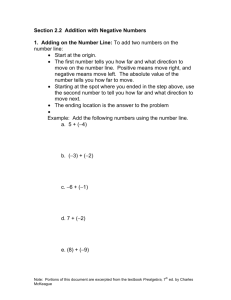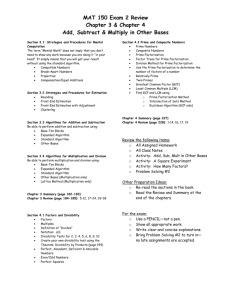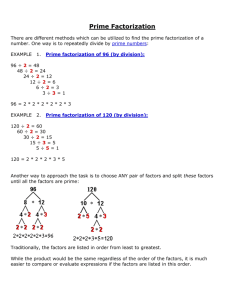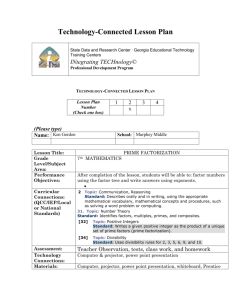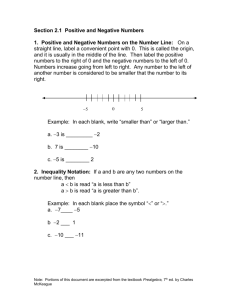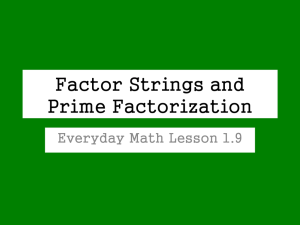Section 3.2 Prime Numbers, Factors, and Reducing to Lowest Terms
advertisement
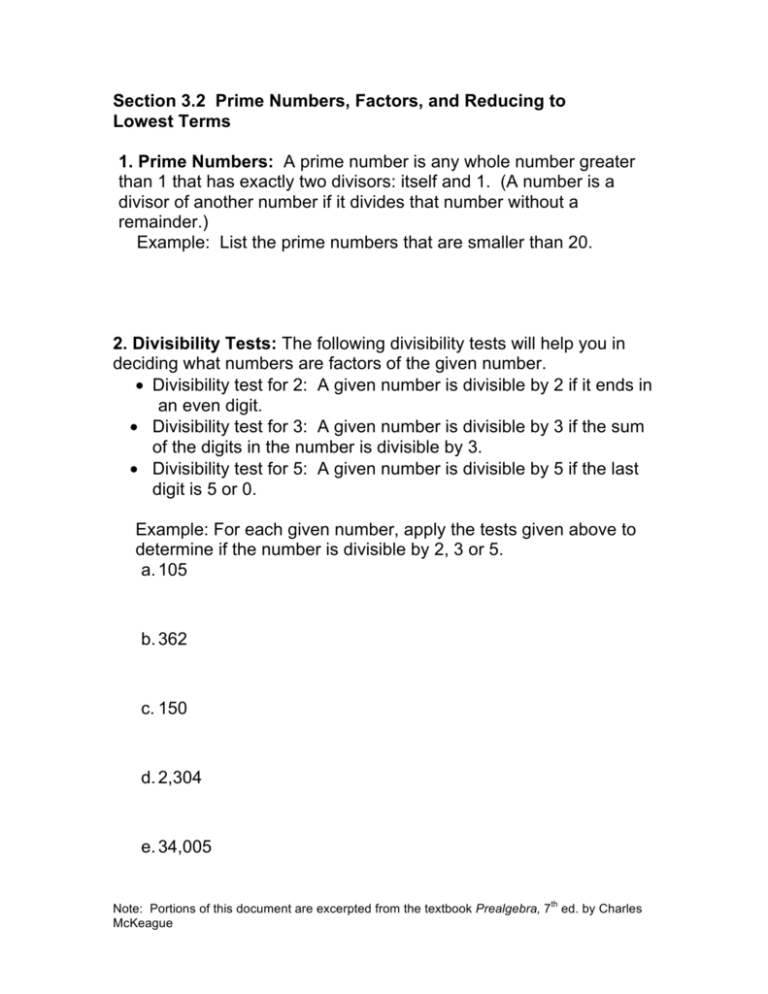
Section 3.2 Prime Numbers, Factors, and Reducing to Lowest Terms 1. Prime Numbers: A prime number is any whole number greater than 1 that has exactly two divisors: itself and 1. (A number is a divisor of another number if it divides that number without a remainder.) Example: List the prime numbers that are smaller than 20. 2. Divisibility Tests: The following divisibility tests will help you in deciding what numbers are factors of the given number. • Divisibility test for 2: A given number is divisible by 2 if it ends in an even digit. • Divisibility test for 3: A given number is divisible by 3 if the sum of the digits in the number is divisible by 3. • Divisibility test for 5: A given number is divisible by 5 if the last digit is 5 or 0. Example: For each given number, apply the tests given above to determine if the number is divisible by 2, 3 or 5. a. 105 b. 362 c. 150 d. 2,304 e. 34,005 th Note: Portions of this document are excerpted from the textbook Prealgebra, 7 ed. by Charles McKeague 3. Writing the Prime Factorization of a Number: To write the prime factorization of a number, write the number as a product of prime numbers. Example: Which of the following represents a prime factorization? a. 12 = 6 • 2 b. 12 = 22 • 3 c. 15 = 5 • 3 d. 22 = 11• 2 e. 20 = 4 • 5 You can use a factor tree to find a prime factorization. Express the given number as the product of two numbers. Then express each of those as the product of two numbers. Continue this process until the numbers no longer factor--you will then have the prime factors. Example: Find the prime factorization for each of the following numbers: a. 18 b. 24 c. 36 d. 105 e. 150 th Note: Portions of this document are excerpted from the textbook Prealgebra, 7 ed. by Charles McKeague 4. Reducing a fraction to lowest terms: A fraction is said to be in lowest terms if the numerator and denominator have no common factors other than 1. To reduce a fraction to lowest terms, divide the numerator and the denominator by all of the factors that they have in common. If you do not know the common factors, write the prime factorization of the numerator and denominator, then divide out the common factors. Example: Reduce the given fractions to lowest terms. a. 21 35 b. 18 24 c. 105 3•5•7 3•5 7 7 = = • = 150 2 • 3 • 5 • 5 3 • 5 2 • 5 10 d. 182 231 e. 24x 36x 255a 2 b 2 c f. 285ab 2 c 3 th Note: Portions of this document are excerpted from the textbook Prealgebra, 7 ed. by Charles McKeague Example: A family spends $2200 monthly for a mortgage payment and has a monthly income of $5500. What fraction of the total income is used for the mortgage payment? Express your answer in lowest terms. th Note: Portions of this document are excerpted from the textbook Prealgebra, 7 ed. by Charles McKeague
